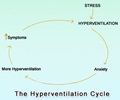Strokes in children may occur even more often than brain tumors but unlike cancer, sadly, strokes in children are sometimes not recognized and treated, or at least not as early as they should be.
Johns Hopkins Children’s Center neurologists are sounding the alarm for parents about a common myth: that children don’t suffer strokes. In fact, nearly 3,200 children have so-called brain attacks each year, and half of them end up with permanent neurological damage, according to Lori Jordan, M.D.
“Strokes in children may occur even more often than brain tumors,” says Jordan, “but unlike cancer, sadly, strokes in children are sometimes not recognized and treated, or at least not as early as they should be.”While some childhood strokes are linked to congenital and genetically caused heart and blood vessel abnormalities, as well as to blood disorders and viral infections such as chicken pox, an important and largely unrecognized risk factor is a tear or other traumatic injury to arteries in the neck or spine.
“Carotid or vertebral artery injury can lead to small tears, which generate blood clots that travel to the brain and cause a fourth of all strokes in children,” Jordan says. A common cause of such stroke-inducing neck trauma is whiplash sustained during a car accident. Other causes include injuries from high-contact sports. Symptoms of neck trauma are neck pain on one side, accompanied by a one-sided headache, possibly with numbness and weakness on that side of the body. Contraceptives and other hormones also increase the risk of blood clots that can break off and get to the brain.
Jordan asks parents, coaches and other caregivers to watch out for symptoms of stroke, which, in addition to blood clots, can be caused by bleeding in the brain after a blood vessel ruptures.
Watch out for:
· Sudden severe headache followed by confusion.
· Sudden weakness on one side of the body.
· Sudden drooping of the face on one side.
· Mental confusion.
· Slurred speech or absence of speech.
· Seizures affecting one side of the body followed by weakness in the affected side.
· Unexplained change in the level of alertness with weakness in one side of the body.
If symptoms occur, consider it a medical emergency, Jordan warns, and get the child to an emergency room to reduce the likelihood of permanent brain damage.
Advertisement
SRM/V











